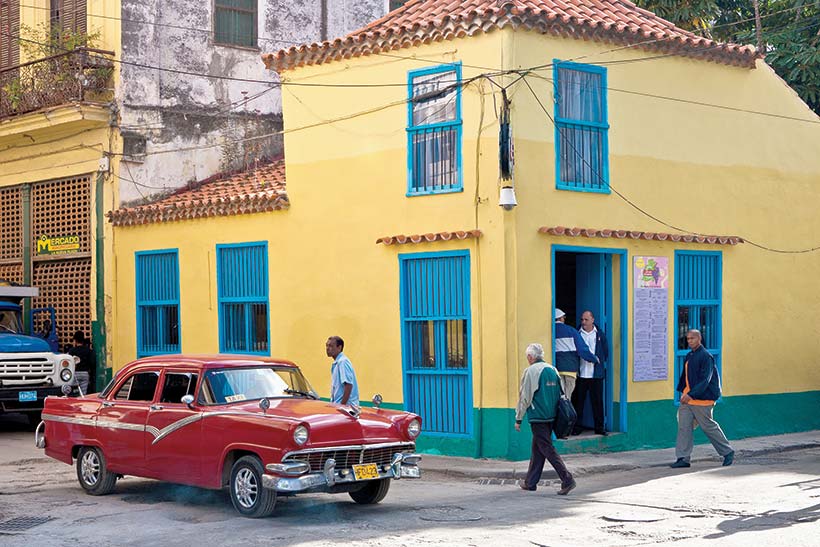
“As a political science and black studies double major, I couldn’t imagine a better place to be,” says Christin Washington ’17, pointing to Cuba’s history as a 1960s refuge for U.S. black activists, its long strife with the United States and the nations’ budding reconciliation. She is in the final days of her stay in the country.
In addition to politics, Janna Behrens, Amherst’s director of education abroad, attributes the increase to the appeal of locations that are off the beaten path.
“You could go to rural China or rural Ghana and still have decent cell phone access and internet access,” she says. “You’re not going to get that in Cuba. Students have an opportunity to really disconnect, which helps them connect more with their experience on the ground and with each other.”
Last year, Behrens sent three professors—Ethan Clotfelter (biology), Sara Brenneis (Spanish) and Jeffers Engelhardt (music)—to evaluate study-abroad programs in the country. They focused on the two in which Amherst students participate: Spanish Studies Abroad and Sarah Lawrence Study Abroad in Havana.
The country was “fascinating, lively, friendly, contradictory and crumbling all at once,” Brenneis says. “For the right student, an opportunity to study in Cuba right now is educationally invaluable.”
Christine Croasdaile ’17, a black studies and Spanish major, is also there now. After developing an academic interest in Afro-Cuban postrevolutionary art, she says, she “yearned to learn more about Afro-Cuban culture as a whole, with a full immersion experience.”
Croasdaile says she’s learned to have patience and to appreciate solitude. “It has equipped me with a newfound independence and strength that I think nowhere else would have provided me.”